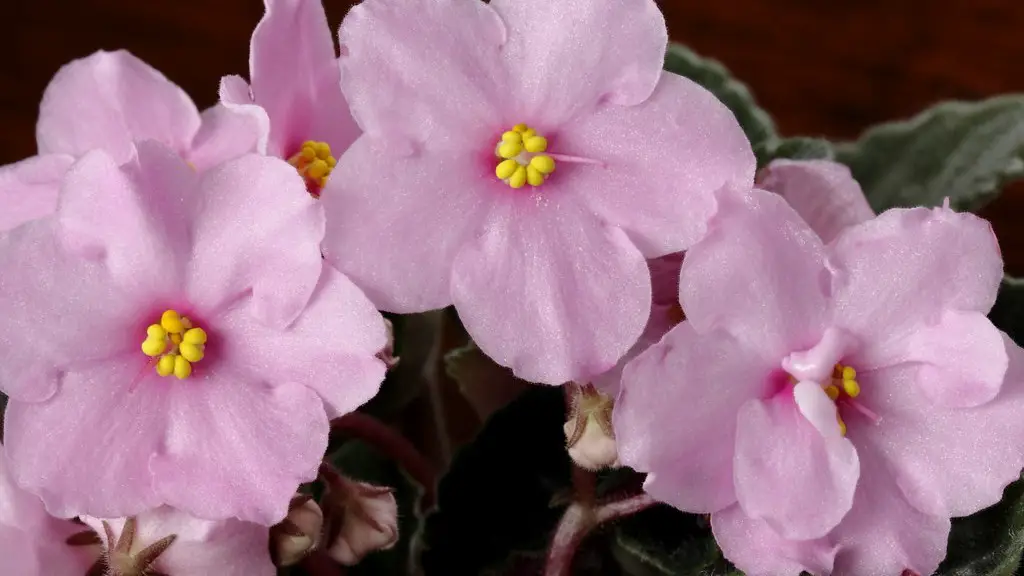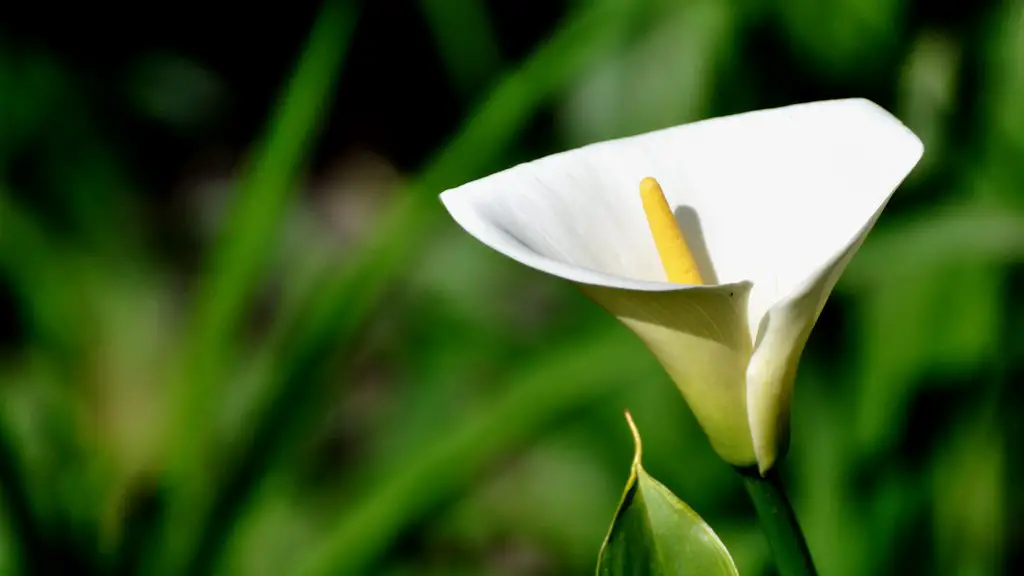Today, more and more people are discovering the joy of growing African violets. These beautiful plants are relatively easy to care for, and with a little attention, will reward you with bountiful blooms. If you’re new to growing African violets, here are some basic tips on how to groom them for optimal health and growth.
1. Start by decide whether you want to re-pot your African violet. If the plant is pot bound, then you will need to re-pot it. Use a pot that is only slightly larger than the one it is currently in. Be sure to use a pot with drainage holes.
2. Next, you will need to water your African violet. Water it thoroughly, making sure to get all the leaves wet. Allow the plant to drain before placing it back on its saucer.
3. Once your African violet is watered, you will need to fertilize it. Use a water-soluble fertilizer that is high in phosphorus. Apply the fertilizer according to the package directions.
4. Finally, you will need to deadhead your African violet. Cut off any dead or dying flowers. Doing this will encourage the plant to produce new flowers.
Where do you trim African violets?
When you are cutting the stem of your African violet, be sure to cut it as close to the stalk as possible, without digging into your plant. Alternatively, you can pinch the leaves off with your fingers. African violets grow from the crown out, meaning the leaves closest to the soil are the oldest.
If you have a success getting your African Violet to bloom, make sure to pinch or deadhead the spent blooms. This allows the plant to continue to put energy into creating more buds/blooms and beautiful foliage.
How do you shape an African Violet
When pruning African violets, it is best to use your forefinger and thumb to pinch off the leaf or flower. You can also use sterilized scissors to remove plant material as close to the base as possible without cutting into the main stem.
If you have an African violet that is becoming leggy, the best way to combat this is to repot the plant and fertilize it with Espoma’s Violet! liquid plant food. This will help keep your plant growing new leaves, which will in turn keep it from becoming leggy. Additionally, this will enhance the colors of your flowers.
How often should African violets be watered?
A wicking system is a great way to make sure your African violets are never over watered. The way it works is you place a wick in the bottom of the pot and fill the pot with water. The wick will suck up the water and keep the soil moist.
One of the main reasons African violets get leggy is because they are not getting enough light. When they are not getting enough light, they stretch to try and reach it which causes them to become leggy. Another reason can be over-watering which can cause the plant to become weak and leggy.
Should African violets be misted?
Water your African violet carefully to avoid leaf spot and crown rot. Use room temperature water and avoid getting the foliage wet. Water the soil around the plant, being careful not to saturate the crown.
If you notice that your African violet’s leaves are wilting, it’s probably time to repot the plant into a larger pot. African violets can grow quite large, so be sure to choose a pot that is big enough to accommodate the plant’s root system.
Do African violets like to be watered from the bottom
African violet plants are best watered from the bottom up. Place the plant in a shallow tray of water for 30 minutes, allowing the soil to soak up the water through the drainage holes at the bottom of the pot. This will help ensure that the plant gets the moisture it needs without damaging the leaves.
African violets plants will do best when they are slightly pot-bound, so it is best to choose a pot that is on the smaller side. A professional tip is to use a pot that is about 3-4 inches in diameter for a standard African violet plant.
How do you encourage African violets to bloom?
If your African violet isn’t blooming, it could be because it isn’t getting enough light. These plants need indirect sunlight; direct sunlight can burn the leaves. For best results, choose a north- or east- facing window. Keep plants away from cold glass and rotate the pot once a week so all leaves receive light.
It is best to not brush the leaves of your African Violet as it can decrease the plant quality and size over time. It is tempting to reach out and touch the soft leaves, but resist the urge for a healthier plant!
What do Overwatered African violets look like
If you have over-watered your African Violet plant, the soil will retain too much water. This retention of water will cause the leaves and/or leaf stems to turn soft, limp or mushy. To fix this problem, you will need to let the plant dry out for a few days. Once the plant has dried out, you should be able to see a significant improvement in the plant’s appearance.
As far as houseplants go, African violets are bit of high maintenance. They prefer to be root-bound, which means that they like to have their roots crowded in their pot. This may seem counterintuitive, but it’s what they need to bloom well. So, if you want your African violet to thrive, you should periodically repot it into the same pot, using fresh potting mix. This will help to refresh the soil and keep the roots healthy.
How often should you change the soil in African violets?
African violets are beautiful, delicate plants that are native to Africa. They are commonly grown as houseplants and are relatively easy to care for. African violets need to be re-potted in fresh soil every six months in order to keep them healthy and to prevent them from becoming root-bound. African violets should also be kept in the same size pot – re-potting them into a larger pot will cause them to produce fewer flowers.
If you are unsure about the quality of your tap water, it is best to err on the side of caution and use distilled or purified water for your African violets. Chlorine levels can fluctuate depending on the season and in some areas, tap water may have high amounts of chlorine, chloramines, or dissolved solids. All of these things can adversely affect your African violets, so it is best to use distilled or purified water if you are unsure about the quality of your tap water.
Final Words
The following is a guide on how to groom African violets:
1. Start by inspecting your plants and removing any dead or dying leaves.
2. Trim off any leaves that are excessively long or have been damaged.
3. Wash the leaves of your plants with warm water to remove any dust or debris.
4. If your plants are in need of a more thorough cleaning, you can dip the leaves in a solution of water and mild dish soap.
5. Be sure to rinse the leaves well before allowing them to dry.
6. Once your plants are clean, trim any flowers that have begun to wilt.
7. Deadhead any spent blooms to encourage new growth.
8. Finally, give your plants a light fertilizing using aAfrican violet fertilizer.
Assuming you would like advice on how to groom African violets, there are a few tips to keep in mind. First, African violets need to be kept in a well-lit area, but out of direct sunlight. They also need to be kept moist, but not too wet. Over-watering can lead to root rot. Lastly, African violets need to be fertilized regularly with a water-soluble fertilizer. By following these tips, you can keep your African violets healthy and looking their best.





